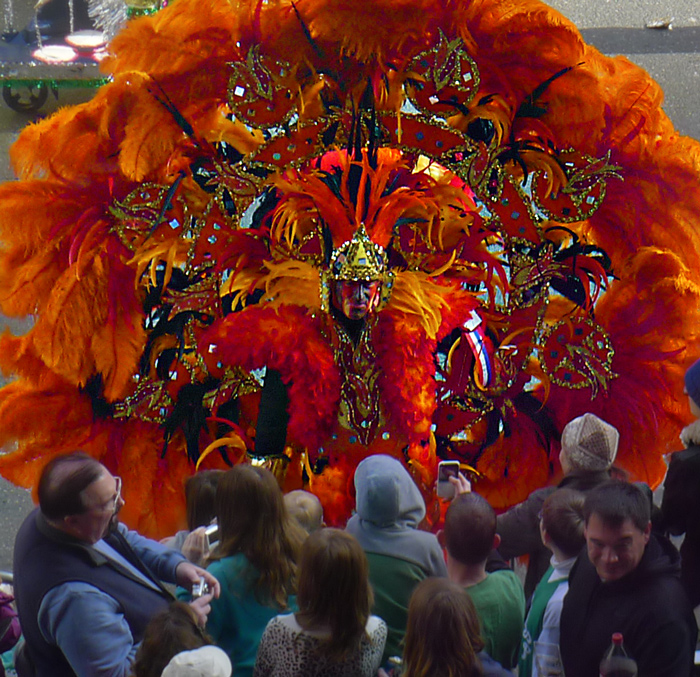Mummering in Philly
Jan 2, 2012
 A Mummer approaches the crowd along Broad Street during Philadelphia's 112th annual New Year's Day parade.
A Mummer approaches the crowd along Broad Street during Philadelphia's 112th annual New Year's Day parade.
The Mummers Parade, unique to Philadelphia though with overtones of New Orleans Mardi Gras festivities, typically lasts about eight hours and involves more than 10,000 strutters, dancers, musicians, and stagehands. The 2012 parade was said to be reduced a bit in size and extravagance, reflecting economic hard times and perhaps also the city's changing culture.
Nonetheless, crowds carrying open beverages mobbed the sidewalks and cross-streets, as brigade after brigade of Mummers in full feathery regalia marched down Broad Street, pausing every few blocks to show off the results of their yearlong labors on costumes, choreography, horn-blowing and banjo-picking and precision dance.
At the convention hall near the end of the parade route, the various bands and brigades perform lengthier, more elaborate versions of their dance routines for judges, who award substantial sums of prize money to the top groups. The prizes don't begin to cover the costs of mummery, however; even though all the dancers work for free, the costumes and special effects can cost a brigade $100,000 or even more.
With less money to spend this year on costumes and staging, more attention was devoted to choreography and dance skills. According to one Mummer choreographer, Dennis Quaile, the mostly male Mummers base their dancing on boxing moves: "punches, lunges, and dodges."
"Anything effeminate they will not do," said Quaile. "Some brigades have girls and they can get away with it. But if the guys don't feel manly, while dancing in their feathers, they won't do it. So I have to keep it as butch as I possibly can."